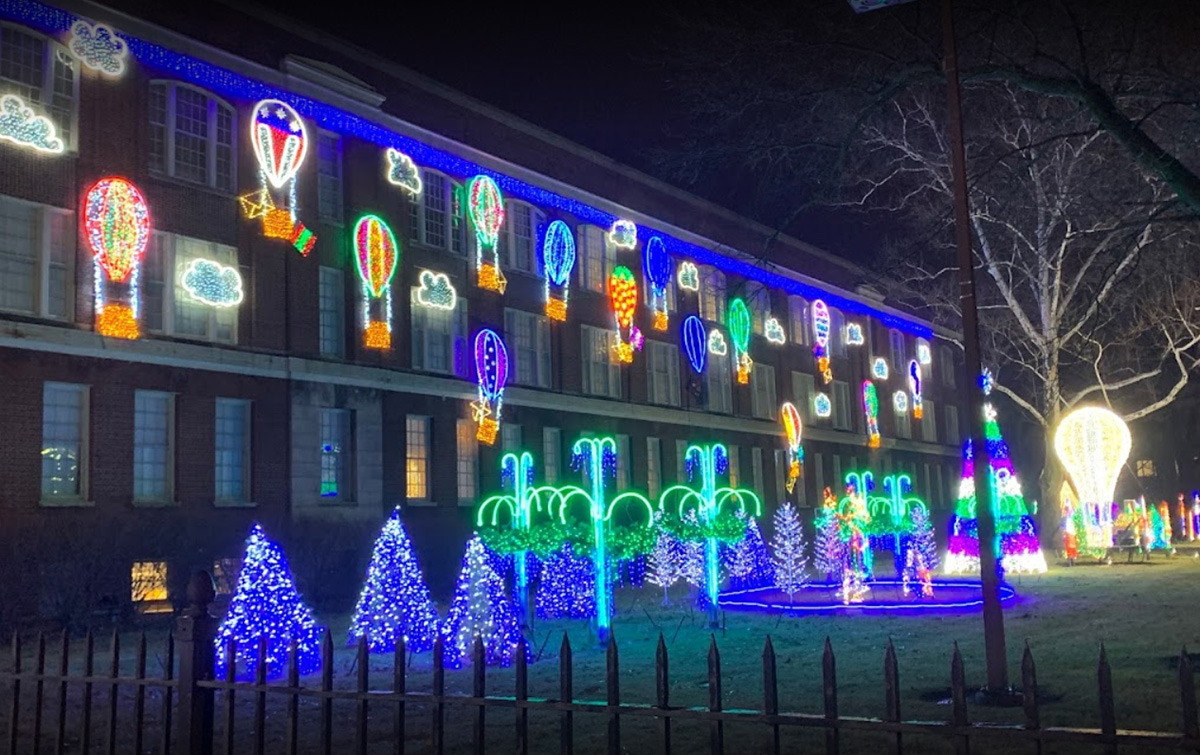
|
|||||||||||||||
|
↵ NEWSBrush Alumnus Helps Redesign NELA Park OperationOriginal Release: 4/272022 
As Brush Arcs, because of our relationship with the "Arc Light", and our close geographic proximity to General Electric's NELA Park on Noble Rd., we thought it would be appropriate to republish an opinion that was first published in the Cleveland Plain Dealer in August of 2020. Written by Ron Ashkenas, Class of '68, the article will elicit memories from graduates old and new, many of whom had an annual holiday tradition of hopping in the family station wagon (or SUV!) for the trip to NELA Park to see the GE holiday lighting display. Ron wrote: The announcement in May that General Electric Co. was selling its GE Lighting business to Savant Systems Inc. was met with little fanfare. Sure, news stories noted that the East Cleveland-based business, which traces its roots to Thomas Edison, constituted an iconic brand. But its sale had little financial impact on GE, other than to provide much needed cash. For me, however, the sale of GE Lighting was personal. As a child growing up in 1950s Cleveland, NELA Park, Lighting's headquarters, was a magical Christmas place. Our parents would put my brother and me in the family station wagon on Christmas Eve to look at NELA's lights. Warmed by a blanket and hot chocolate (no seat belts then), we were mesmerized by the displays. Little did we know that NELA Park (named after the National Electric Lamp Association, which GE bought in the early 1900s) was the first industrial park in the United States and a major source of lighting innovation. Thirty years later, I had a chance to go inside NELA Park and learn what it took to make those Christmas lights. In 1988, Jack Welch recruited a team of professors and consultants to help him simplify the company, an initiative called Work-Out. As one of the consultants, I was assigned to GE Lighting and sent to meet with John Opie, Lighting's president. I must admit that Opie didn't welcome me with open arms, being skeptical about Welch's initiative and whether some young consultant could help — even if I was from Cleveland. At our first meeting, he gave me a presentation about GE Lighting, using acetates with an overhead projector (state of the art then), saying "You better learn what we do." Soon, Opie was neck-deep in products, costs, customers, research, and more. My head was spinning, and the only thing I remembered was Opie's injunction that "we don't call them 'light bulbs', we refer to them as 'lamps'." Eventually, we identified opportunities for simplification, such as speeding new product commercialization, reducing breakage, and improving customer delivery schedules. In the next year, we held sessions on these and other topics. Hundreds of GE Lighting employees and managers developed and implemented ideas for taking unnecessary "work out" of the business. As the results became apparent, Opie went from being a skeptic to a strong supporter throughout GE. In 1990, however, the Lighting business changed. With the fall of the Berlin Wall, Eastern Europe became an open market, and GE was proud to be the first Western company to wade in by purchasing Tungsram, Hungary's state-owned lighting company. Before long, I was spending more time in Budapest than Cleveland, replicating the Work-Out process and giving Hungarian employees a voice for the first time in decades. In the years that followed, I moved on to other assignments but maintained lifelong relationships with people from NELA Park. I also kept an emotional attachment to the business and rooted for it to succeed. GE Lighting's standing, however, diminished over time. Despite pioneering work in LEDs, the profits associated with Edison's incandescent "lamp" — which GE could produce for pennies and sell for dollars — slowed innovation. In effect, GE Lighting was trapped by the "innovators' dilemma," avoiding disruptive approaches for fear of cannibalizing the existing business. So instead of becoming a leader in energy efficiency, GE Lighting became a cash cow with a "for sale" sign around its neck. (continued)  |
The Charles F. Brush Alumni Association
5044 Mayfield Road
Lyndhurst, Ohio 44124
(216) 691-2108 ☎
https://www.brushalumni.com/ 🌐
http://www.sel.k12.oh.us/brushalumniassociation_home.aspx 🌐